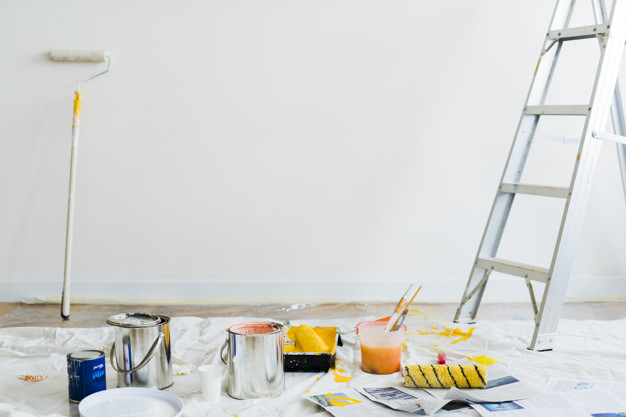How To Choose Wall Paint Color

Last week, we spent a couple of days thinking and picking out wall paint color for an office design project we are working on. The plan of the office and the positioning of the window makes it a naturally dark room. Designing it into a cozy and warm space while not making it dark had to be nailed at the wall paint stage. We successfully did and we are looking forward to sharing the project once it is complete.
For now, we’d like to share a few tips on how to choose the color for your walls. Painting a room or a single wall in a room is a simple process that promises to have a major impact in any space. Here’s a few simple guideline to follow.
1. Don’t Pick Your Paint Color First
Working with an empty room? Pick the wall color last. Wall painting is the first thing to be done, but choosing the color is the last step of the Interior Design process. It seems natural to get the biggest things done first, but it is much easier to choose a paint color that goes with your furniture and decor than it is to choose decor to go with a paint color. First, find inspiration for your room—be it in a painting or a textile you love. Select your fabrics, furniture, and major accents first, and then consider how they all come together.
2. Think about the mood and purpose of the room
How do you use the space? Who uses the space? These are both major determinants in color choice. Colors make us feel a certain way, so the purpose of the room will inform the colors to choose from. Are you painting a workspace that needs to feel energising and motivating? You may want to select a warm color, which has a stimulating effect and perhaps a bright one. Are you designing a bedroom that should have a relaxing and calm feel? Cool colors, which tend to recede are your go to colors.
3. What effect do you want to achieve?
One of the simplest ways to maximize space and create certain effects is using the color on the walls. Do you want to make a long, narrow space feel bigger and wider than it is? Or do you want to make the ceiling appear higher? Select light colors for this effect. If you want to make an expansive space feel more cozy and intimate, warm hues make the walls feel closer. Do you want to make a small room seem bigger? Cool hues recede visually and can be used to make the walls feel more distant. You may now be wondering which colors are warm and which colors are cool. That is our last and probably most important tip.
4. Familiarize yourself with the Color Wheel
Remembering the color wheel will always make the process shorter. We all learned about the primary colors in school – red, yellow and blue. Secondary colors – orange, purple and green are got from combining the primary colors. Blue, Green and Purple are the cool colors and painting with these will make small rooms appear larger and more airy. The other three – red, orange and yellow are the warm colors which will give a room a more vibrant appearance. Understanding these makes it easy to understand how to match the colors for the effect you are trying to achieve.
Would you like to learn more about the color wheel? What colors are complimentary, analogous or monochromatic? Leave us a message in the comment section. We could dedicate a blog or two to color theory.

Ahabwe is the Chief Executive Officer & Interior Designer at Rungi Spaces.

Well done
Agatha - June 22, 2020Iam very crazy about architectural and interior design lately. So I find information regarding these areas eye opening. Thanks for the tips on wall painting. I have been stuck on that stage…we will follow your advice.
Diana - June 22, 2020We are glad we could be of help. Don’t hesitate to reach out for more professional advice.
Ahabwe Sebombo - June 22, 2020